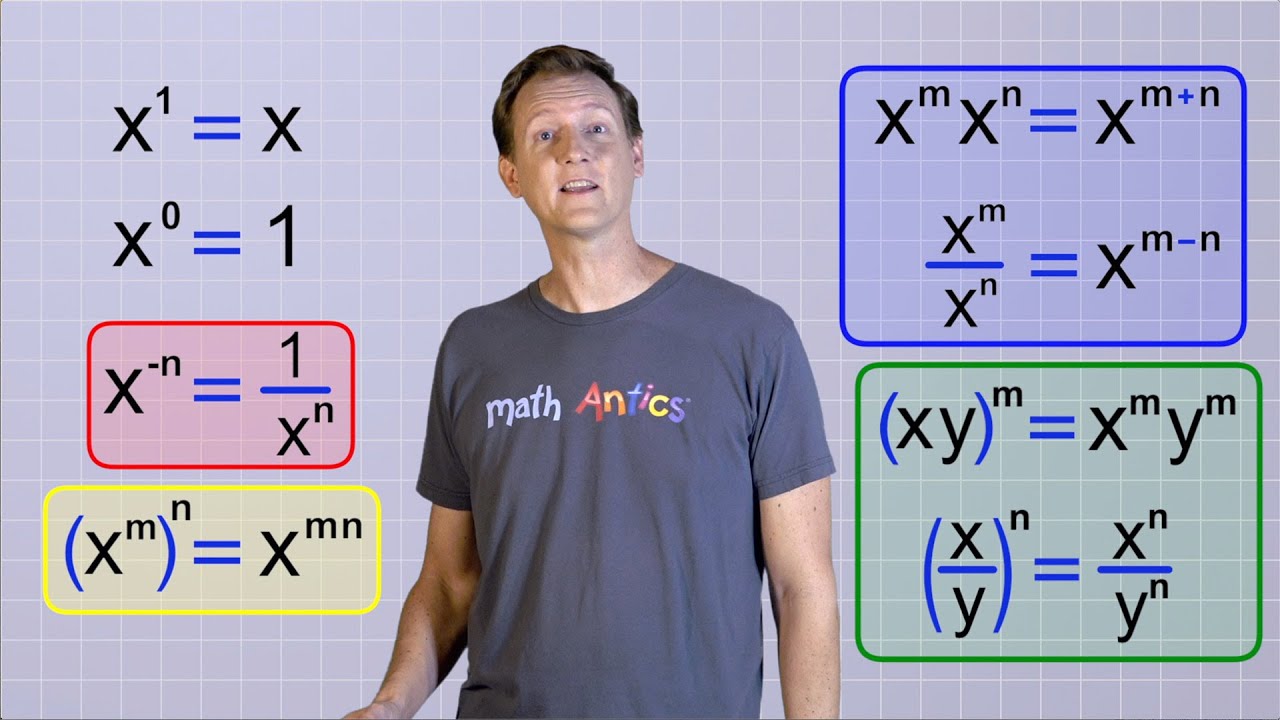The following are the laws of exponents mentioned below:
(This symbol ^ represents raised to the exponent and ‘*’ denotes multiplication)
1. Law of multiplication of exponents
y^a * y^b = y^(a+b).
Whenever the same base is multiplied with different power or exponents, we need to add the powers or exponents. In this case, y is the base and ‘a’ and ‘b’ are exponents.
For example: (1/9) ^3 * (1/9)^7 = (1/9)^3+7 = (1/9)^10.
2. Law of the division of exponents
y^a / y^b = y^a-b
Whenever the same base is divided with different power or exponents, we need to subtract the powers or exponents. In this case, ‘y’ is the base and ‘a’ and ‘b’ are exponents.
For example: (7/11)^9 / (7/11) ^4 = (7/11)^9-4 =(7/11)^5
3. Law if the power is zero
y^0= 1
When we have a base with the exponent as zero, we will have an answer, which will always be one.
For example: (⅗)^0 = 1
4. Law of exponent raised to exponent is given
( y^d ) ^e = y^(d * e)
Whenever a base has an exponent raised to an exponent, we need to multiply both exponents. In this case ‘y’ is the base and ‘d’ and ‘e’ are exponents.
For example: [(4/13)^4]^6 = [(4/3)^4x6] = (4/3)^24
5. Law of exponent of product of two or more bases are given and exponent is same
( y * z )^a = y^a * z^a
When multiplication of two or more bases is given but their power is the same, then we can write the same exponent or power with each base and multiply the bases. Here, ‘y’ and ‘z’ are the bases, and ‘a’ is the exponent.
For example: ( 6 X 2 )^5 = 6^5 X 2^5
6. Law of Exponent of Quotient
(y/z)^a = y^a/ z^a
When the division of two or more bases is given and their power is the same, we can write the exponent with the divided bases. Here ‘y’ and ‘z’ are two bases while ‘a’ is the exponent. So, individually, we have to write y^a divided by z^a.
For example: (9/17)^5 = 9^5 /17^5
7. Law of Negative Power
y^-a = (1/y) ^ a
If there is a negative power raised to the base, then, first, we need to inverse
or reciprocal the base and then write the exponent above. Here, y raised to the
negative exponent. So, initially, we need to reciprocal y, which will be (1/y) then we need
to raise the given exponent.
For example: (1/ 3) ^-6 = (3/1) ^ 6 = 3^6
These laws of Exponents are to be used in sums of powers and exponents. These Laws of Exponents make the sums easier to solve.
Problem Sum 1: (4/11)^5 X (4/11)^6 / (4/11)^8
= ({4/11)^(5+6)}/ (4/11)^8
(using the law of exponent of multiplication, we added the powers of the base, as they are the same)
= (4/11)^11 / (4/11)^8
(using the law of exponent of the divisor, we subtracted the powers of the base)
= (4/11)^11-8
= (4/11)^3
Down below, both the bases are different and raised to the same power, so we have written as 4^3 divided by 11^3.
= (4^3/11^3)
(After the multiplication of both bases, we need to find the final answer)
= 64/ 1331
Problem Sum 2: (6/11)^0 + (4/9)^0 + (3/ 5)^0 - (2/ 5)^0
Any base raised to 0 will always be one as per the laws of exponents
= 1 + 1 + 1 - 1
= 3 - 1
=2
Problem Sum 3: [(7/9 )^4]^5 X (7/9)^4 X (9/7)-3
= [(7/9)4x5] X (7/9)^ 4 X (7/9)^3
Here in this step first, we have used the law of exponents raised to the exponent. Also in the last part, we have used the law of negative exponent, wherein we have reciprocal the base and raised to the power.
= (7/9)20 X (7/9)4 X (7/9)^3
Now, we have to use the laws of multiplication of exponents. So, we need to add all the powers to the base.
= (7/9)^20+4+3
=(7/9)^27.


